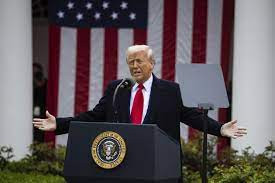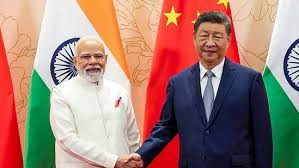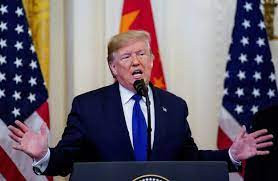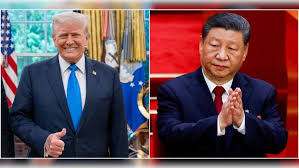The New Protectionism: How U.S. Tariffs Are Reshaping the Global Trade Order

The United States is increasingly embracing tariffs as a tool not only of economic policy but also of geopolitical leverage. What was once considered a tactical move to address specific trade imbalances is now morphing into a full-scale shift toward protectionism that has the potential to reshape the global trade architecture. Few economies, even those with strong industrial bases or deep trade ties with the U.S., appear fully prepared for the long-term consequences of this evolving landscape.
The resurgence of U.S. tariffs began during the Trump administration under the banner of “America First,” targeting imports from China, Europe, and even allies such as Canada and Mexico. Initially, many viewed these moves as temporary disruptions or negotiating strategies. However, with the Biden administration maintaining many of the same measures—and even introducing new tariffs, particularly in the context of green technology and critical minerals—it has become clear that tariffs are now a central feature of American economic strategy, not an anomaly.
The logic behind these policies is rooted in a mix of economic nationalism and strategic recalibration. The United States, wary of its reliance on adversarial nations for essential goods such as semiconductors, pharmaceuticals, and rare earths, has sought to repatriate supply chains and reindustrialize key sectors. This has led to generous subsidies under laws like the Inflation Reduction Act and the CHIPS and Science Act, complemented by tariffs that aim to shield domestic industries from low-cost competition abroad. Supporters argue that these steps are necessary to rebuild American manufacturing, create jobs, and ensure national security in a turbulent world.
Yet, this approach carries profound implications for the rest of the world. Many developing economies, particularly in Southeast Asia, Latin America, and Africa, have built their growth models around export-oriented industries. These countries, which depend heavily on access to large consumer markets like the United States, now find themselves navigating a new environment where their goods may be subject to higher costs and regulatory hurdles. Their ability to adapt quickly to this change is limited by weak industrial diversification, fragile infrastructure, and policy uncertainty.
Even developed economies such as those in the European Union are feeling the pressure. European automakers, for instance, now face stiff tariffs on electric vehicles exported to the U.S., while also competing against heavily subsidized American manufacturers. This has prompted concerns about a subsidy war or retaliatory trade barriers, undermining transatlantic cooperation at a time when unity is essential in the face of global challenges like climate change, authoritarian resurgence, and supply chain instability.
China, the primary target of many of these tariffs, has responded with a mixture of retaliatory measures and strategic investment in self-reliance. However, the broader consequence has been the decoupling of major economies—what some economists now refer to as the emergence of “geoeconomic blocs.” Trade, once seen as a vehicle for peace and cooperation, is being reshaped into a contest of economic sovereignty and power projection. This shift marks a fundamental departure from the post-World War II liberal order built around institutions like the World Trade Organization and multilateral agreements.
For global businesses, this transformation presents significant risks. Supply chains, which have been optimized for cost and efficiency, are now being rerouted for resilience and geopolitical alignment. While some firms are relocating production from China to countries like India, Vietnam, or Mexico, this “friend-shoring” is not without cost. Higher input prices, logistical challenges, and regulatory complexity are becoming the new normal, with consumers ultimately bearing the burden.
Governments, too, are being forced to reassess their economic strategies. Countries that once bet on globalization as the engine of growth must now invest in domestic capability, rethink trade alliances, and build buffers against market shocks. This is a tall order, particularly for nations with limited fiscal space or political instability. The risk is that a new wave of protectionism could exacerbate inequality between countries and undermine the global fight against poverty and climate change.
At the heart of this upheaval lies a broader philosophical question about the purpose and design of international trade. Should nations pursue absolute efficiency, even if it means dependence on geopolitical rivals? Or should they accept higher costs in the name of strategic autonomy and resilience? There are no easy answers, but what is clear is that the rules of the game are changing—and fast.
If the trend toward protectionism continues, the world may be entering a new phase of economic fragmentation. This does not necessarily mean a full retreat from globalization, but rather a reordering of priorities—where values like security, stability, and fairness weigh more heavily than mere cost reduction. In this context, international cooperation will be more important than ever, not less. Global institutions need to be reformed to reflect this new reality, ensuring that trade can still serve as a force for shared prosperity rather than a weapon of division.
The United States, as the architect of much of the existing global economic order, has a special responsibility in this transition. It must balance its legitimate domestic priorities with its global leadership role, recognizing that sustainable prosperity cannot be achieved through isolation. The challenge for the world is to adapt to this new reality without surrendering the gains of the past seventy years. Whether that is possible will depend not only on policies and tariffs, but on the political will to reimagine globalization for a more complex, interconnected, and uncertain world.
You might also like!















